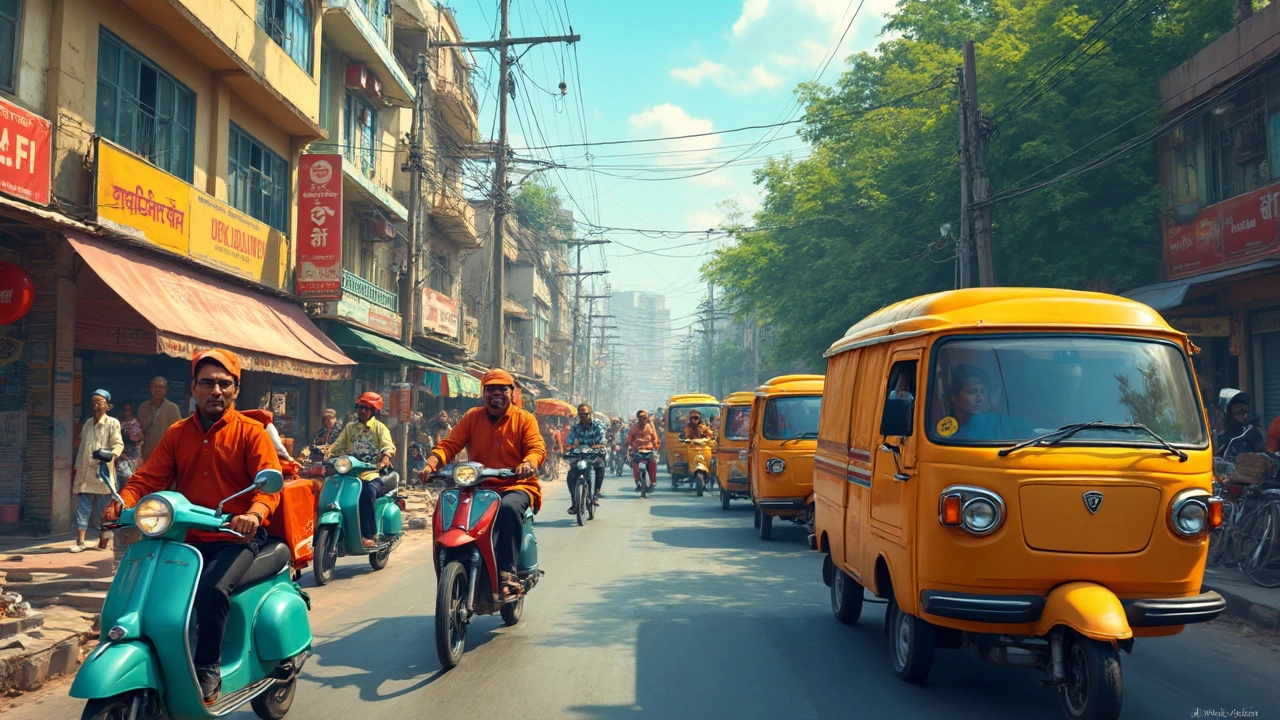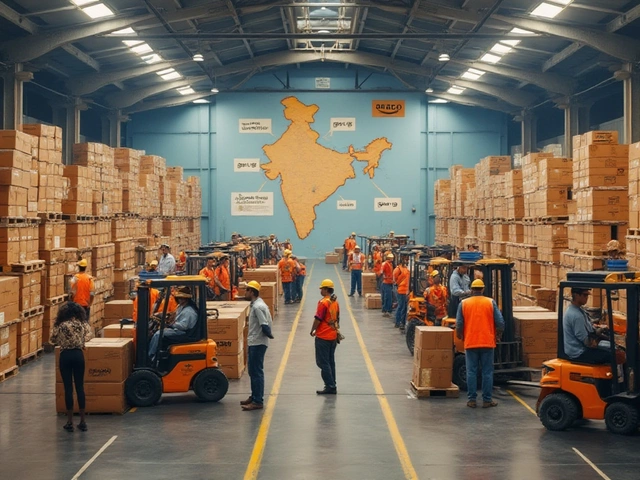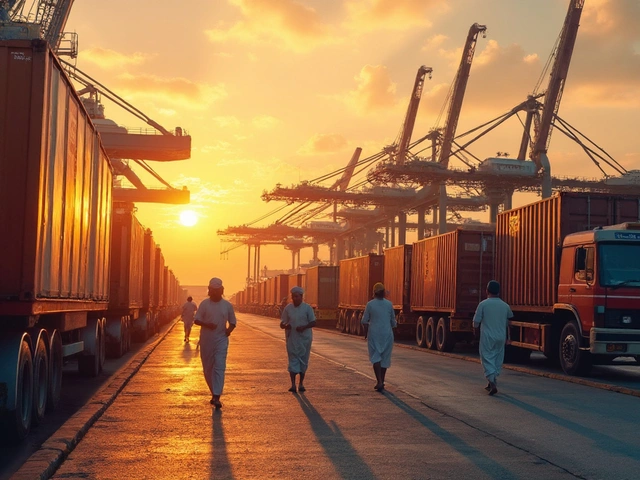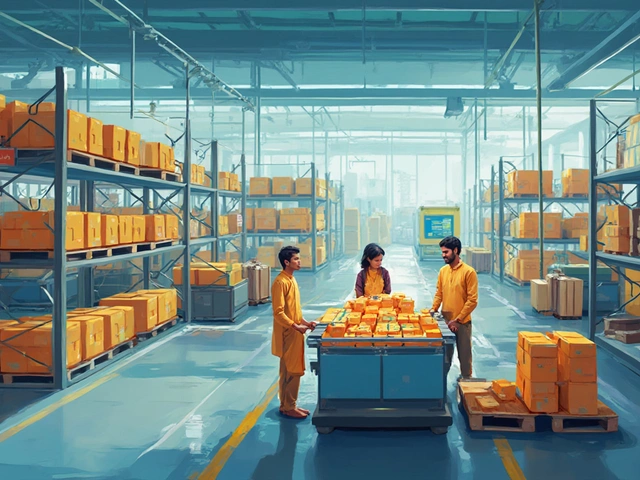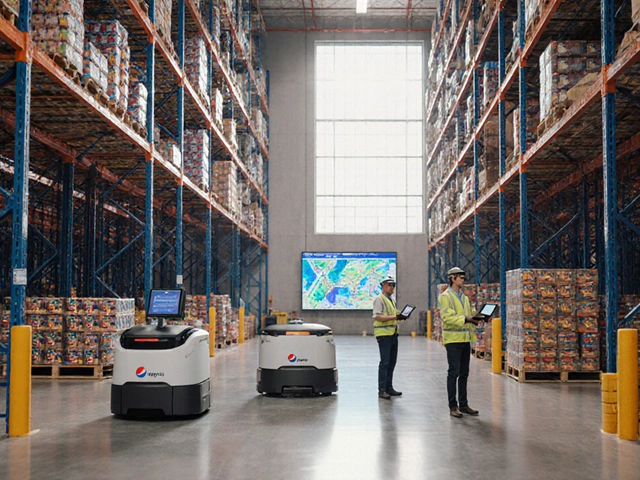Ever ordered something online and wondered when it would finally show up at your doorstep? You're not alone. Last mile delivery is the final leg of the shipping journey, and it can be surprisingly tricky to nail down. We're talking about the process that gets your package from the nearest hub to your front door.
The time it takes isn't just about distance—traffic patterns, weather conditions, and even delivery methods can play a big role. Knowing what affects this can help set the right expectations whether you're buying or shipping. Plus, businesses can make their deliveries quicker by focusing on the right strategies and adopting new tech.
Whether you're someone who can't wait to rip open that package or a business trying to impress customers with speedy service, understanding the ins and outs of last-mile delivery time might just be your secret sauce.
- Introduction to Last Mile Delivery
- Factors Influencing Delivery Time
- Impact of Technology on Delivery Speed
- Strategies for Faster Deliveries
- Conclusion: Making Last Mile Delivery Efficient
Introduction to Last Mile Delivery
The term last mile delivery sounds simple, doesn't it? It's the final stretch of getting a product from a warehouse to you. But, in reality, this is often the most challenging and costly part of the shipping process. Experts say it can make up over 50% of total shipping costs. Crazy, right?
Think about this: when you order a product, it travels thousands of miles, crosses countries or continents, but it's those last few miles that can make or break the delivery experience. If there's a hiccup here, you're left wondering what took so long.
This part of the journey is all about efficiency and customer satisfaction. The faster and smoother it goes, the happier everyone is. In a world that's growing more accustomed to same-day or next-day deliveries, getting last-mile logistics right is crucial.
Why Last Mile Delivery Matters
With online shopping booming, the delivery time is a key selling point for retailers. If companies can consistently provide speedy and reliable deliveries, they're more likely to win customer loyalty. That’s a big deal, especially with so many options out there.
Plus, there's this environmental angle. Efficient last mile logistics reduce the carbon footprint by cutting down on wasted trips and fuel. Some companies are even testing drones and electric vehicles to make the last mile greener.
Challenges in Last Mile Delivery
Alright, here's a quick look at what makes this part tricky:
- Urban congestion: Cities are crowded, and traffic can throw schedules out of the window.
- Remote locations: Delivering to rural areas can take longer due to distance and infrastructure.
- Customer availability: Missed drop-offs happen more than you'd think, leading to repeat attempts.
So, there's the scoop. The last mile is a logistical puzzle, but solving it is essential for modern commerce. Stay tuned as we dive deeper into how these challenges can be tackled, making shipping faster, cheaper, and more reliable.
Factors Influencing Delivery Time
When it comes to last mile delivery, there's a bunch of factors that can speed things up or slow them down. Let's take a closer look at what those are.
1. Distance to Destination
Obviously, how far your package needs to go is a biggie. If it's just a few blocks away, it'll get there quicker than if it's miles off. But it's not just about how far it is; the actual route matters too. Urban areas might be closer, but traffic can be a huge pain, while rural areas might have longer distances but less congestion.
2. Traffic and Weather Conditions
Traffic jams? Not fun for anyone, including your delivery driver. Rush hour can add chunks of time to deliveries. Weather can be a real wild card, too. Snowstorms, heavy rains, or fog can slow things down considerably.
3. Type of Delivery Service
Is it a bike courier zooming through city streets, or a van making its rounds? Same-day express services often cost more for a reason—they're usually faster. But not every delivery can take advantage of these quick methods, especially for bulkier, heavier stuff.
4. Delivery Windows and Scheduling
Some services offer specific delivery windows, allowing customers to pick a time that suits them. This can help avoid failed delivery attempts but also means your package might get stuck waiting for its turn. Flexible schedules can sometimes mean faster deliveries, especially if the driver doesn't have to time meds-out to meet specific slots.
5. Use of Technology
- Route Optimization: Many companies use smart tech to figure out the best routes, minimizing drive time and avoiding traffic.
- Real-time Tracking: This keeps customers in the loop, so they're ready to receive their packages instead of playing delivery tag.
Even though there's a lot that goes into how fast your delivery gets to you, understanding these factors can definitely help manage expectations and maybe even give you some peace of mind.
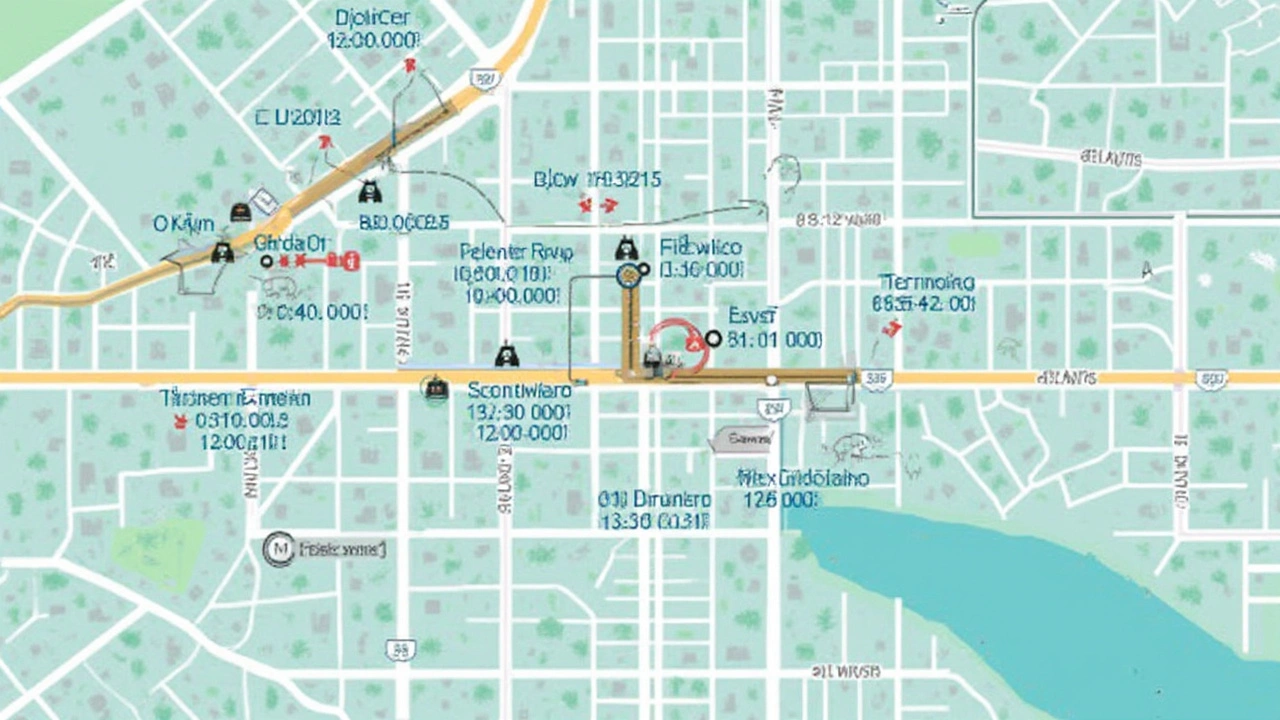
Impact of Technology on Delivery Speed
Technology is reshaping every corner of our lives, and last mile delivery is no exception. One of the main tech game-changers is route optimization software. These handy programs analyze traffic data and delivery locations to give drivers the best possible path. This means less time stuck in traffic and more time knocking on doors—or at least tossing packages onto porches.
Another big tech boost comes from drones and autonomous vehicles. Can you imagine your next package dropping from the sky? Companies like Amazon are testing drones to speed things up, especially in areas tricky for traditional delivery methods. Autonomous vehicles, meanwhile, promise to reduce costs and delivery times by cutting down on the need for human drivers.
Smart Tracking Systems
Smart tracking systems provide real-time updates, letting you track your delivery right to your door. This tech keeps everyone in the loop, from the delivery team to you eagerly waiting at home. Not only does this provide peace of mind, but it also increases efficiency by allowing for adjustments if something unexpected crops up.
Speaking of unexpected, Internet of Things (IoT) solutions are helping logistics teams monitor conditions like temperature and humidity during shipping. This is crucial for products like groceries or medications that need specific environments.
Here's a quick look at some technologies making waves in logistics:
- Route Optimization Software: Reduces travel time and costs.
- Drone Delivery: Fast and futuristic, reducing human error and delivery time.
- Autonomous Vehicles: Lowers labor costs and delivers during non-traditional hours.
- Smart Tracking Systems: Enhances transparency and efficiency.
Companies that invest in these technologies aren't just speeding up their delivery times—they're also positioning themselves for a more efficient, cost-effective future in shipping.
Strategies for Faster Deliveries
If you're dealing with the hustle and bustle of last mile delivery, you've probably wondered how to speed it up and keep customers smiling. Let's cut through the fluff and talk about what really works.
Optimize Delivery Routes
One of the most straightforward ways to shave time off delivery is by fine-tuning the delivery routes. There are smart logistics software that can calculate the most efficient routes by considering traffic, road conditions, and even weather. This isn't just about efficiency—it's also about using less fuel, which is great for the environment and your wallet.
Utilize Local Warehouses
Setting up smaller, strategically located warehouses can have a massive impact on delivery times. By keeping your inventory closer to your delivery zones, you shorten the distance drivers need to travel. This approach, often called micro-fulfillment, is already used by giants like Amazon and Walmart to ensure swift delivery time.
Leverage Technology
From drones to autonomous delivery robots, technology is charging forward at breakneck speed. Using drones can skyrocket the speed of deliveries, especially in urban areas where traffic congestion is a nightmare. In some cities, autonomous vehicles are being tested to handle deliveries, promising round-the-clock operations.
Smart Parcel Lockers
Install smart lockers in busy urban areas. These are secure boxes where a delivery driver can leave packages for customers to pick up at their convenience. It eliminates the need for redelivery attempts and cuts down the time spent per delivery. They're also a hit with customers who value flexibility.
Collaborate with Local Couriers
Partnering with local third-party delivery services can be a game-changer. These services know their cities inside out, ensuring swift delivery even during peak hours. They offer the added bonus of being more personal, which can enhance customer satisfaction.
| Strategy | Time Reduction Potential |
|---|---|
| Optimized Routes | 10-20% |
| Local Warehousing | 15-25% |
| Drones/Robots | 30% |
| Smart Lockers | 15% |
| Local Couriers | 20% |
Speeding up last mile delivery doesn't happen overnight. But with these strategies, you're not only cutting down on delivery times but also staying ahead of the competition. At the end of the day, a little speed-up can go a long way in keeping you and your customers happy.
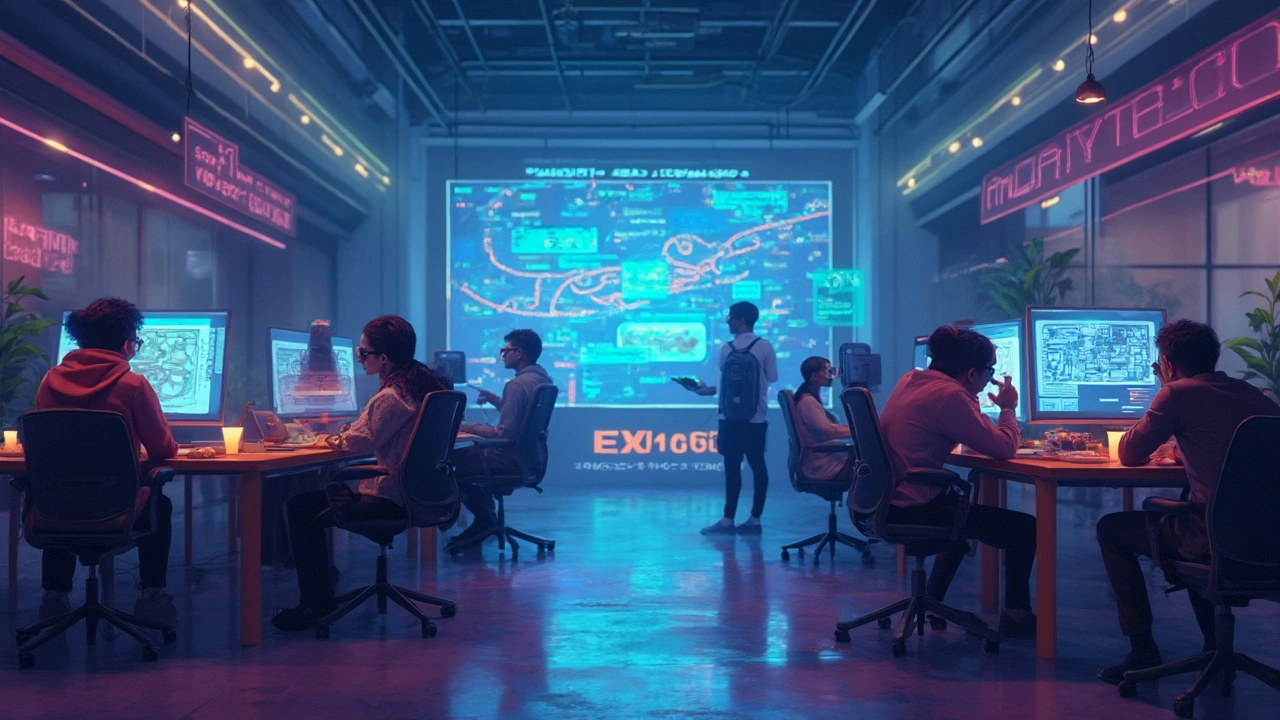
Conclusion: Making Last Mile Delivery Efficient
Wrapping up our chat on last mile delivery, it's clear there's no one-size-fits-all answer for how long it takes. But hold on, there's hope for making it faster and smoother. By exploring smart strategies and leveraging technology, businesses can tackle the main hurdles of delivery time.
The first step? Streamlining logistics with route optimization tools. These can help cut down delivery time by calculating the fastest way to get from point A to B, factoring in traffic, weather, and other hiccups. Imagine saving hours on the road—now that's efficient!
Another game-changer is technology. Think AI and real-time tracking systems. These let companies track their shipments live, redirecting trucks as needed and keeping customers in the loop. No more wondering where the package is.
For businesses, considering delivery methods like drones or crowdsourced solutions can also trim the timeline significantly. A stat from 2023 showed that companies using drone delivery could reduce drop-off times by an average of 40%. Talk about a futuristic leap!
| Delivery Method | Time Reduction % |
|---|---|
| Drones | 40% |
| Crowdsourced Solutions | 25% |
Lastly, communication is key. Keeping customers informed about status and timing goes a long way in boosting customer satisfaction, even if there are delays.
So, in this digital age, there's plenty of room for improvements—faster, smarter, and more efficient options in the world of delivery. All it takes is the right mix of strategy, tech, and sincere desire to deliver faster.
